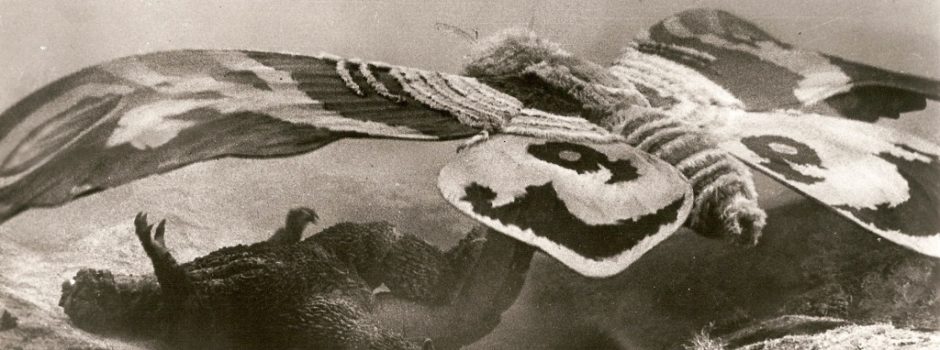
Avenging Eagle is solid old school kung fu from the Shaw Brothers. It’s no pinnacle of the genre – there really isn’t that much to distinguish it from most Shaw martial arts films – but a good cast, baroque weaponry, and nice scenery elevate it slightly above the average old-schooler.
The film is helmed by Sun Chung, a martial arts second-stringer whose action films are rarely up to the level of Chang Cheh, Liu Chia-lung, or Chu Yuan (his non-martial arts films tended to be more interesting). He’s probably best known in the West for Human Skin Lanterns, a grisly but fun horror/martial arts hybrid in which Lo Lieh decides to make lanterns out of his enemies’ wives, mistresses and sisters. Sun also directed Chen Ping in The Sexy Killer, a knock-off of Coffy which does not improve much on the original except during an absolutely incredible shotgun shootout, which justifies the entire project.
Sun tends to film fight scenes in a rather pedestrian manner, lacking the over-the-top gonzo insanity of Chang Cheh or the amazing choreography of Liu Chia-lung, with one notable exception. Sun often places the camera close behind a fighter, with the result that dodged fists or weapons seem to punch directly at the camera lens in extreme close-up. It’s a striking and effective trick – one that I wish other old school directors had picked up on – which he puts to good use here and in Human Lanterns. Perhaps Sun missed his calling as a director of 3-D features.
In Avenging Eagle, Sun managed to land an A-list cast, with Ti Lung and Alexander Fu Sheng headlining as the protagonists. Ti Lung plays a member of a group of expert fighters known as the 13 Eagles. The godfather of the criminal Iron Boat Gang, played by Ku Feng (possibly the best character actor in the Shaw stable, and no slouch at playing wily older villains) has trained the Eagles since childhood to be ruthless killers and enforcers for his gang.
Feng and his gang are thieves and murderers, but an encounter with a kind family leads Ti Lung to realize the error of his ways, and break with the gang. Naturally Feng sends the Eagles to kill him (hey, standards have to be maintained, right?). Ti Lung must defeat them and eventually challenge Hung himself. This is not an easy task, especially since each Eagle is a master and fights with a unique weapon. Fortunately, Ti Lung has the assistance of a mysterious wanderer (Alexander Fu Sheng) who appears to have a personal interest in the fight.
It’s a far from atypical kung fu plot, but Sun Chung distinguishes the film somewhat by avoiding unnecessary comic relief and pointless subplots. While the characters are not fully developed, there is at least an effort to set up relationships and motivations, particularly with regard to the central bond between Fu Sheng and Ti Lung. Don’t expect anything too clever though – Fu Sheng’s mysterious identity can be guessed from a mile away.

I’ll go on the record now and say that I’ve never much liked Fu Sheng. He has a particular film persona, what I like to call “idiotic jackass,” that grates on me to no end. He has a great deal of physical talent, but it tends to get lost in unfunny comedy routines and overbearing stupidity. However, that being said, this is one of the rare roles where he breaks out of that role and gives a decent performance. He still plays a bit of a mischievous character, but, for a change, I didn’t have an overwhelming urge to smack him. Fu Sheng and Ti Lung have good chemistry here, as well as a couple of excellent fights. Together they make a satisfying pair of heroes.
In addition to Ku Feng, Wang Lung (Crippled Avengers, My Young Auntie, Shaolin Temple), one of the most reliable heavies working for the Shaws, also appears, dressed like a superhero, as the senior Eagle to tangle with Ti Lung, and Shih Szu has a small cameo as the daughter of the family that aids Ti Lung.
Stylistically, the film is a mixed bag. By and large, it’s the same sets and costumes, and the same type of camerawork, that make up the standard Shaw repertory, Sun Chung’s over-the-shoulder shots aside. One positive exception is the use of more outdoor location shots, including cliffs and ravines, and a few ravishing mountains. It’s a nice change from the usual set-bound Shaw productions and gives it a look slightly more akin to King Hu’s masterful Come Drink With Me, though nowhere near on that level of artistry. There is also a very impressive sustained tracking shot during a large scale battle. One negative is that Chung tries an experimental technique of freeze-framing the actors during fights, which simply looks terrible.
Really, though, the best thing about Avenging Eagle is the unique armament. As in Return of the One-Armed Swordsman, each character has a different weapon. Ti Lung fights with a three-section staff, like that used by Gordon Liu in the classic 36 Chambers of Shaolin. The individual Eagles wield a mix of weaponry, ranging from a ball-and-chain to a chain dagger to throwing hatchets, and Ku Feng dons a mean pair of golden claw gauntlets for the excellent final battle. There is also a pair of one-armed fighters who duel in tandem, with one holding a shield and the other a blade. The highlight is definitely Fu Sheng though, whose “Double Sword in Sleeve” technique involves hidden shoe blades and Travis Bickle’s wrist-sling from Taxi Driver.
2 1/2 out of 4 stars (Good).
[This review has been revamped from the version originally published on the previous version of CSB.]
